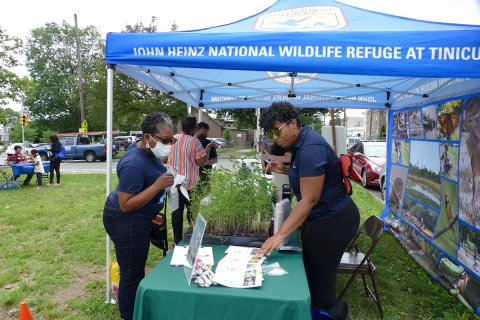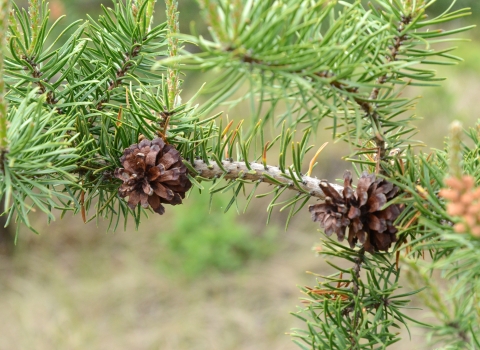Environmental injustice clearly is nothing new. Governments and industries across the nation have a track record of building toxic facilities and other sites in or near minority and low-income communities. Health issues stemming from such environmental contamination can contribute to shortened life expectancies, and families may be trapped in toxic environmental conditions for generations because of poverty. In part, the lack of wealth and clout often prevents positive changes in their neighborhoods.
But environmental equity is a basic human right.
The challenge of Environmental Justice is moving toward environmental equity, spreading environmental disadvantages equitably among all people, ensuring that all people share the benefits of conservation, and providing everyone with a seat at the table when discussing environmental issues.
For years, grassroots organizations, environmental groups, advocates, and academic experts have been working to address environmental injustices, climate change climate change
Climate change includes both global warming driven by human-induced emissions of greenhouse gases and the resulting large-scale shifts in weather patterns. Though there have been previous periods of climatic change, since the mid-20th century humans have had an unprecedented impact on Earth's climate system and caused change on a global scale.
Learn more about climate change , and systemic racism greatly impacting marginalized communities across the country. But many front-line communities believe that when it comes to environmental protections and public amenities, the federal government and others simply ignore them.
President Biden has raised the importance of Environmental Justice by signing Executive Order 14008 that includes initiatives such as Justice40, putting Environment Justice and climate change at the center of the federal government agenda. Simple stated, Justice40 supports communities in climate crisis by mandating that 40% of the benefits from government-funded climate action or existing programs go to disadvantaged communities.
They have tapped more than two dozen advocates from around the country to serve on the White House Environmental Justice Advisory Council (WHEJAC), which has already hosted two virtual public meetings since March. WHEJAC’s primary focus is Justice40. The members are asking affected communities and organizations across the country, “What Justice40 programs would help you?”
It’s not enough to put policy in place. Within the Department of the Interior, Secretary Deb Haaland released a statement after the George Floyd verdict: “We must acknowledge the pain that African-American communities across the nation and around the world are feeling during these turbulent times and commit ourselves to real progress. Serious inequities exist in this country. We cannot continue with business as normal. We must tackle these issues and build a country where race doesn’t determine access to opportunity, justice, and accountability…That means…lifting up the voices of those who have been underrepresented, and centering those perspectives in the decisions and policies we implement as part of a broader commitment to Environment Justice…”
The U.S. Fish and Wildlife Service too has Environmental Justice among our top objectives. And you will read about some of our Environmental Justice work in this magazine.
In addition, relationship-building is underway within the Service with communities of need, but it is not easy and won’t happen overnight. It can take years to truly build trust within a community and to know community members’ concerns and ideas. Communities will not judge on words but deliverables. To start, previous DOI Secretarial Orders that unfairly tilted the balance of public lands, climate change, equality, or meaningful community engagement have been revoked. These Secretarial Orders and policy guidance prevented Environmental Justice for Tribal communities and marginalized communities for current and future generations.
“For those who are sick, desperate for federal assistance, they want to believe help is on the way. Those who died, it’s too late. The White House Environmental Justice Interagency Advisory Council and WHEJAC embrace these changes and challenges to bring equality to those who begged and pleaded for assistance. Delivering on the content of Justice40 can result in deliverables unheard of within federal government. To ask for clean water, air, food, good health, and just the necessities of life is the right of everyone on planet Earth,” says Kim Lambert, who represents the Service on the Interagency Advisory Council and is the Service’s Environmental Justice Outreach Specialist.
The administration has stitched climate and Environmental Justice into the fabric of decision-making across the federal government. We have our goal of environmental equity. Now, everyone is wondering what success will look like.
- This article is from the summer issue of Fish & Wildlife News, our quarterly magazine.
- More Fish and Wildlife News, including how to subscribe to our Fish and Wildlife News email list.






